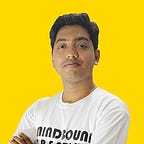How do I edit impactful documentaries?
There is a very popular saying,” a film is made on an editing table.” Can’t be truer for documentary films. It’s where filmmakers discover the story on the go, adapt to what’s happening, and capture moments with a vision of a worthy final film. I’m going to tell you the process of how it all comes together.
Hello, I’m Shushrut, and I’m a filmmaker, creative entrepreneur, and media strategist. Video editing is something I learned pretty early on and still work on projects and stories that really matter. Usually the filmmakers I work with throw massive amounts of footage which sometimes go up to around 700 GB; literally hundreds of clips that I go through manually. They tell me the story they want to tell and it’s on me to find the story in the mountain of footages. Editing a documentary is like a puzzle —
It’s what Michelangelo had said about sculpting: “every block of stone has a statue inside it and it is the task of the sculptor to discover it.”
I have a go-to question for everyone I work with. What do you want the audience to feel after they finish watching the film? Do you want them to feel hopeful, satisfied, sad, angry, craving for more? The answer to this question is my decision-making pillar for every stage of the process. First I separate interviews from the bulk of the footage. I insert the interview into the software and find the parts which will tell the story that we are trying to tell. While I cut the important parts of the interview, I create a structure of the film on paper. The structure includes how to introduce the subject, what started this story, why is this story important not only for who is living it but also who is watching it; building them with blocks of drama and some rules of storytelling that I strongly believe in. Once I’m happy with the structure, I show them to the director for confirmation. Post confirmation, I arrange the interviews as important plot points of the story structure which creates a flow. This story flow drives the emotion leading to the end emotion that we want the audience to feel. But this story flow makes sense when you watch it but doesn’t give any emotion; just a bunch of clips connected together.
One rule I use here is the rule of contrast — which is to heighten the emotion, I connect contrasting tones of the story together. As an example — if you want to heighten the sadness of poverty, have the scene next to the luxury of the rich. It’s called juxtaposition.
Then it’s time to segregate the rest of the footage. I create folders with scene names as per the script structure I created and I drop the selected footage into each scene as I would like to use it. After it’s done, I decide an approximate duration I want the scene to be as per the emotion I want to create. It’s completely instinctive and I don’t follow any rules. I insert dummy music from popular films that I find to be suitable to the tone of the scene. I go to each folder of segregated selected shots and arrange them to create a flow of scenes that carries the story forward. It’s also very instinctive but I try to create meaning when I place the shots in order. Everything in editing is juxtaposition and how you structure things. After the interview positioning and music, it’s just filling in the blank space with footage that creates a meaningful montage.
After it’s done, we go through revisions as per what the director suggests. Then we send the cut for sound, music, and color correction. The dummy music I chose ends up becoming a reference for the music director 99% of the time because the director falls in love with it after repeated watching and nothing else fits — but here the important thing is to stick to the story, audience, and watching the film with a fresh perspective. Then in the color correction stage, everything is brought together and given the final output. If I’m doing the color correction, I take the output. And that is how I edit impactful documentaries; some I have done in just 7 days and some have taken up to a year.
Visit www.mohantystudios.com to learn more about my work.
#freelancevideoeditor #videoediting #postproduction
